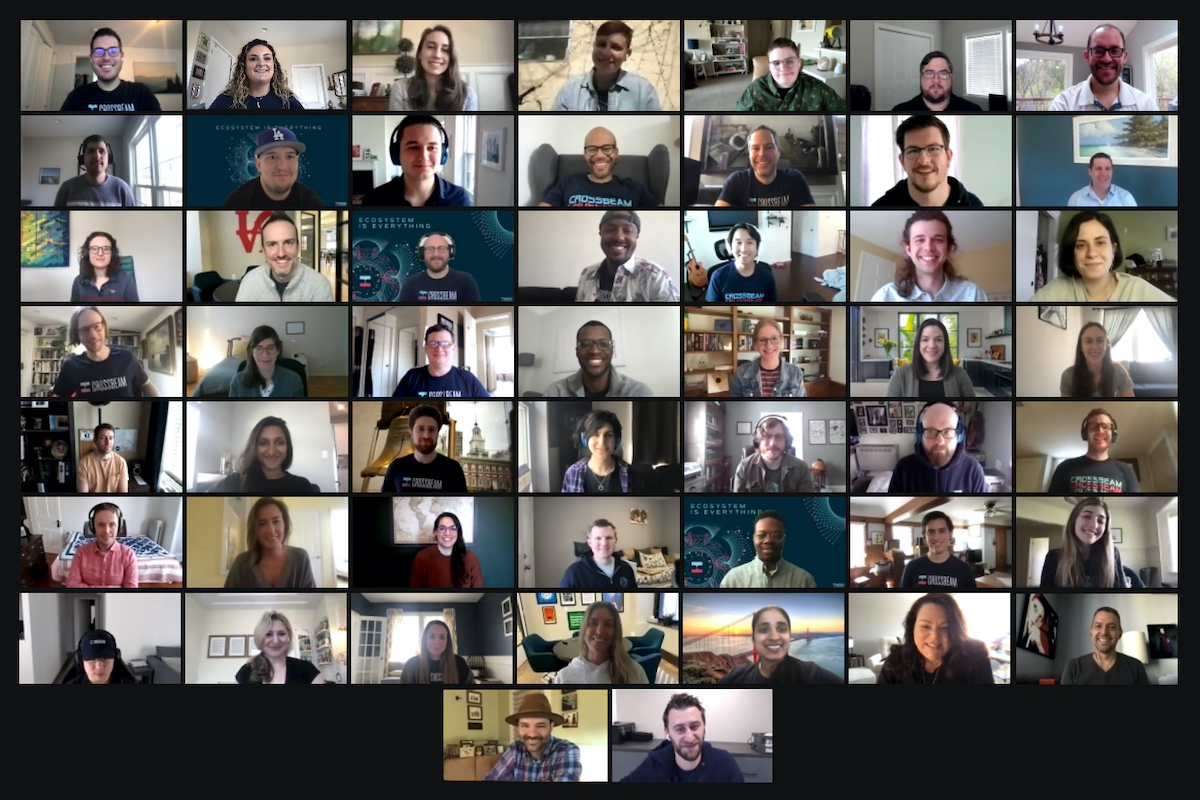For Mawulom Nenonene, head of talent acquisition at LTSE, a company’s narrative is so valuable that he keeps a post-it on his desk that reads: “The shortest distance between two people is a story.”
It’s a particularly important concept when you’re a company trying to engage potential employees — people who might actually choose to apply or accept a job based on what their network says about the company. While it might seem like the driver is going to be internal company culture, what people are saying on the outside, if they’re saying anything at all, can have an impact on who you’re attracting.
Nenonene shared his post-it-note philosophy as part of a panel at Introduced by Technical.ly, the annual conference that’s part of Philly Tech Week presented by Comcast. Speakers Nenonene, Crossbeam Head of People Operations Mandy Poling and Ben Franklin Technology Partners Marketing VP Jason Bannon shared their thoughts on how to influence the company stories that float around Slack channels and networking meetups.
All three agreed that if you want particular brand marketing, you need to decide what it is early on. After that, the most crucial way to know if a company is meeting its goal and story is to check in with employees constantly — and not skip the alumni network — to see what people are saying and thinking.
For Bannon, it’s important for brand marketing to based in real employee opinions, but it’s a delicate balance between frequent check-ins and forcing something.
“Everyone wants their content marking to be genuine and everyone wants their story to grow in a genuine fashion,” Bannon said. “But when you ask for genuine too many times, it really looks like you’re asking for something that’s not there. So you do have to get comfortable with letting the stories gradually emerge.”
Procurement teams are now asking about it, they’re caring about who they’re doing business with. And I’m hoping that trend continues.
When getting the stories, he added that it’s equally important to not confuse company culture with brand marketing, because while culture can influence brand, it’s not something clients really notice.
“People confuse culture and brand a lot; your clients don’t see culture at all,” Bannon said. “They receive the benefits of good culture, but they don’t get to see it and ultimately most of your clients won’t care about culture.”
Poling, however, disagreed, noting that organizations are starting to pay attention to a company’s culture and asking in questionnaires how well a team is represented or how employees feel working there.
“Procurement teams are now asking about it, they’re caring about who they’re doing business with,” Poling said. “And I’m hoping that trend continues.”
With that in mind, Nenonene said that part of the culture that can influence brand marketing is the value in employees feeling taken care of and supported for goals in and out of the company.
“When it comes to individuals that we bring in, my goal is to support individuals to live out their professional goals and that means if they’re going to work at the organization for a long or short time great, but the goal is that they will come in, be empowered and then leave with more,” Nenonene said.
Bannon said that post-employment stories have a lot of values as well. In the rearview mirror, most will reflect on whether or not an employer expressed interest in their growth, not just how they worked out at the company, and will share that with others.
“They will say, ‘Did those people genuinely seem to care for me?'” Bannon said. “‘And if that is true, I will continue to say good things about the organization and the people that are part of it.'”
Poling agreed, noting that while a company can set brand marketing goals and post employee stories all they want, the real trick is making workers feel like they’re in a place where they’re valued.
“When you’re proud of where you work, employer branding is easy,” Poling said. “We’re just telling the story that our employees are living.”
Watch their full conversation below:







